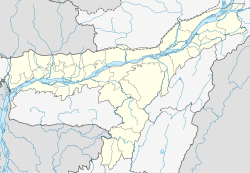| Established | 1962 |
|---|---|
Field of research | Defense and development studies |
| Director | Dr. Dev Vrat Kamboj |
| Location | Tezpur, Assam, India 26°39′17″N92°47′28″E / 26.65475°N 92.791146°E |
Operating agency | DRDO |
| Website | https://www.drdo.gov.in/labs-and-establishments/defence-research-laboratory-drl |
| Map | |
The Defence Research Laboratory (DRL) is a defence laboratory of the Defence Research and Development Organisation (DRDO) located in Tezpur city of Assam state of India. It conducts research and development studies on vector-borne diseases, improving the quality of drinking water, waste biodegradation and management. [1]

